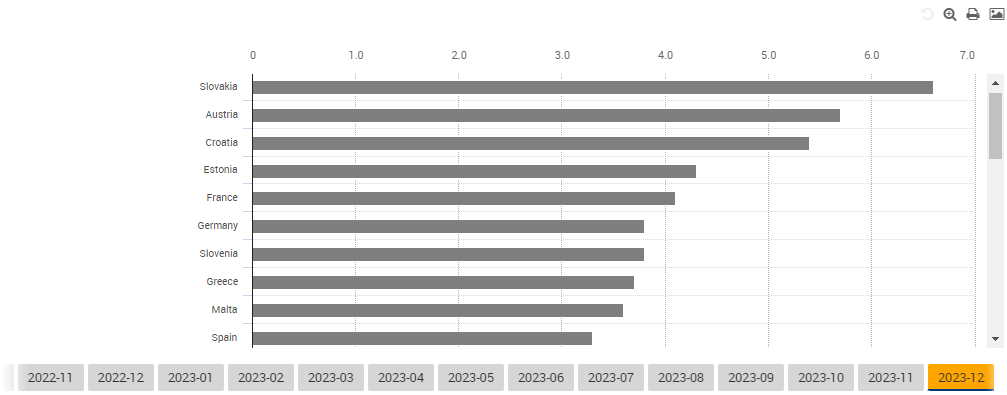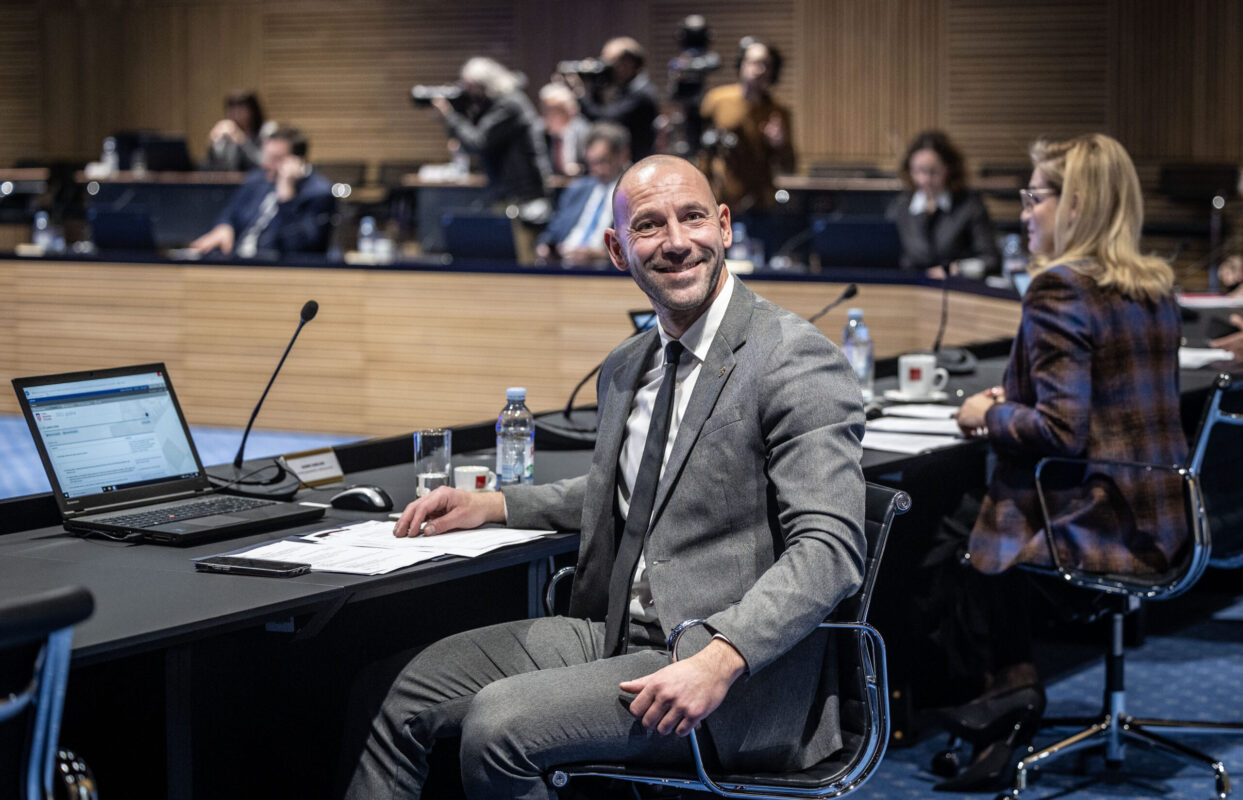Original article (in Croatian) was published on 5/1/2024; Author: Gabrijela Galić
In December 2023, Croatia’s inflation rate was surpassed only by Slovakia and Austria among eurozone countries.
Damir Habijan, the Minister of Economy and Sustainable Development, remarked on the latest inflation data: “According to these preliminary data, we see a further trend of slowing inflation. (…) Also, one interesting piece of information, if we look at the countries of the European Union within the eurozone, nine countries have a decline in the inflation rate. The Republic of Croatia is also among those nine countries”.
As per the initial estimates by the State Bureau of Statistics, Croatia’s inflation rate, based on the consumer price index, decreased to 4.5 percent year-on-year in December 2023.
For the entire year of 2023, the inflation rate stood at eight percent.
In December last year, compared to November, the inflation rate decreased by 0.5 percent.
The December inflation rate of 4.5 percent represents the lowest since October 2021, when it stood at 3.8 percent.
Food remains the segment with the highest inflation
Inflation continues to be primarily driven by the prices of food, drinks, tobacco, and services. According to the main components of the index, the estimated annual inflation rate for food, beverages, tobacco, and services was 6.3 percent each. For industrial non-food products excluding energy, the rate was 3.9 percent, while energy recorded a decrease of 0.6 percent.
Meanwhile, monthly data shows that in the categories of food, beverages, tobacco, and services, prices increased marginally by 0.1 percent each. Conversely, energy prices dropped by 1.7 percent and industrial non-food products, excluding energy, fell by 1.2 percent.
The Minister of the Economy correctly notes the ongoing trend of decelerating inflation in Croatia. The peak inflation rate over the past two years was in November 2022, reaching a significant 13.5 percent. The decline started from December 2022, although annual inflation remained in double digits until April 2023.
His observation is also accurate regarding Croatia being among the nine Eurozone countries that experienced a decrease in inflation in December.
However, Croatia continues to have one of the highest inflation rates among the Eurozone nations.
A decrease of 0.1
Eurostat’s recent release shows the trend of inflation in December 2023, including the first estimate of the Harmonized Index of Consumer Prices (HICP). According to the HICP, Croatia’s annual inflation rate in December was 5.4 percent, a slight decrease of 0.1 percent from November.
Meanwhile, the average annual inflation rate in the eurozone for December was 2.9 percent.
Among eurozone countries, Slovakia and Austria had higher inflation rates in December, at 6.6 percent and 5.7 percent, respectively, placing Croatia among the EU countries with the highest inflation rates.

In contrast, November’s inflation rate in the Eurozone was 2.4 percent, while it was 3.1 percent across all EU member states. In that month, Croatia’s inflation stood at 5.5 percent, with only Slovakia and Ireland having higher rates in the eurozone.
Food prices continue to be a major factor driving inflation in Croatia, as indicated by Eurostat’s data. In November 2023, food prices in the Eurozone rose by 6.8 percent year-on-year, while Croatia experienced a 7.9 percent increase. Belgium, Greece, Spain, Malta, and Ireland were among the Eurozone countries with higher food price growth in November.



